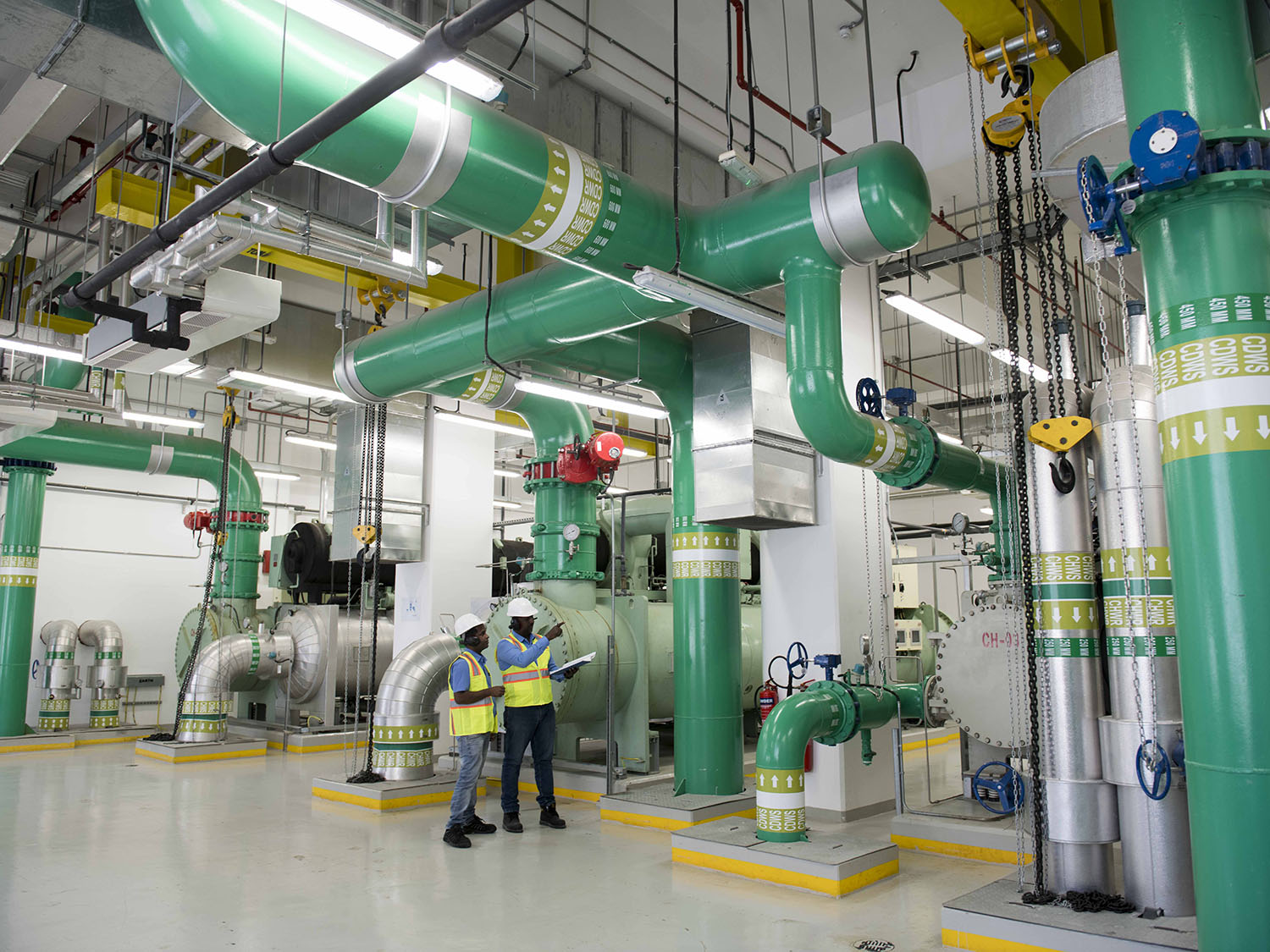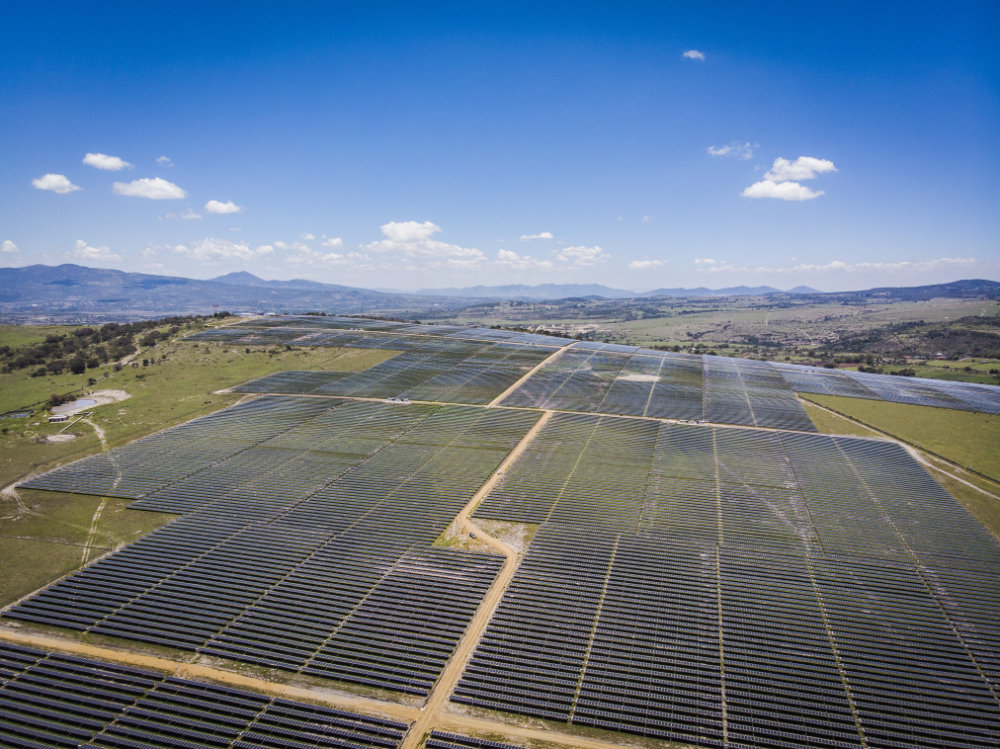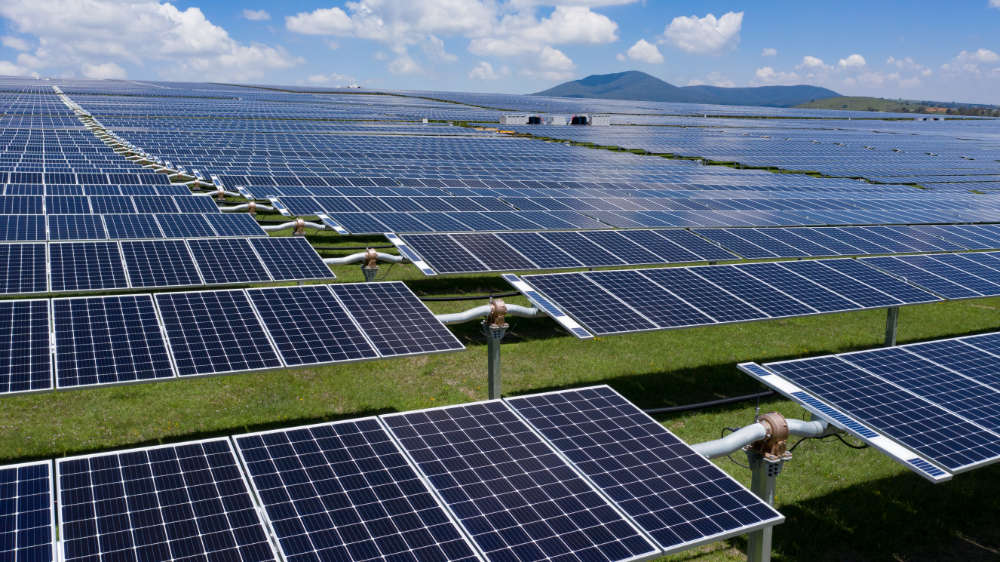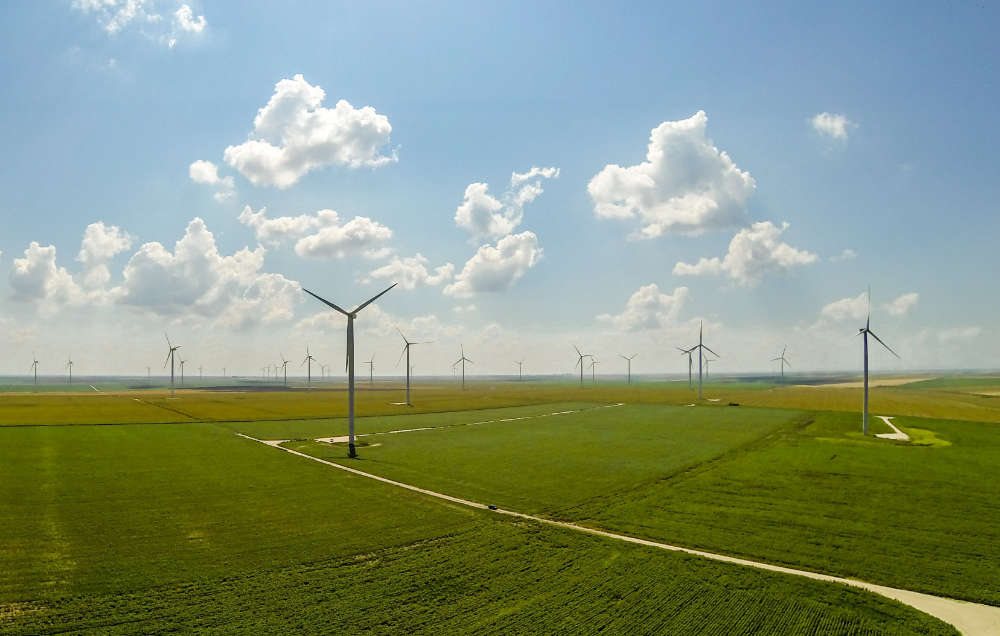Enjoying steady year-round sunshine, heavy rainfall, significant oil and gas reserves, and exceptionally strong winds along its northern coast, Colombia is a dream-come-true for power generation. Growing prosperity and reduced security risks since the early 2000s have significantly boosted private consumption, industrial output and energy demand. However, there is still substantial room for energy demand growth, as evidenced by comparing energy consumption per capita across the region.
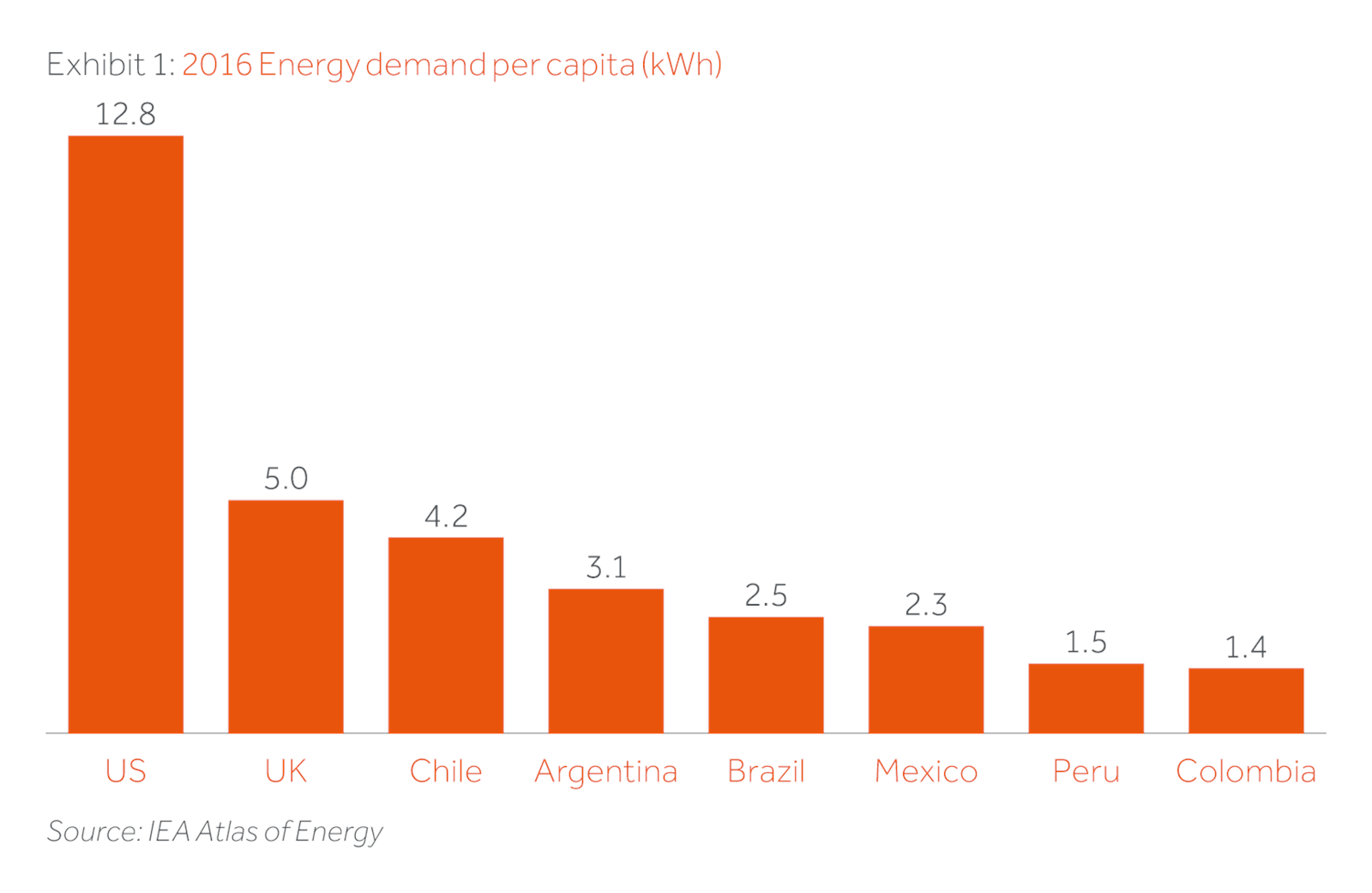
On paper, investment in Colombia’s energy infrastructure should have been an attractive opportunity for international players decades ago. However, Colombia’s energy agenda has been behind that of regional peers since before the turn of the millennium. Even though the government made, and continues to make, efforts to implement bespoke investment initiatives to accommodate concerns from foreign players, this has been a decades-long process of trial and error. Progress has been made though, and foreign investors have responded accordingly. Today, the government is keen to promote further privatisations, renewable auctions and upgraded regulatory reforms across selected power verticals to keep improving the country’s energy infrastructure via foreign investment. How has Colombia overcome the barriers for foreign investment, and what specific opportunities and challenges remain in its energy infrastructure sector?
Hydroelectric is the core power technology taking over 65% of the country’s installed capacity. Dependence on hydro was even more pronounced back in the 1980s, which made the country particularly vulnerable to changing rainfall patterns. Back then, utilities were inefficient, government-owned, vertically integrated players operating in different regions. Enter the early 1990s, a strong El Niño phenomenon, characterised by long droughts, wreaked havoc across the country, causing repeated nation-wide blackouts. The energy crisis coupled with political will for reform triggered restructuring of the energy sector. The industry was unbundled and the first wave of privatisations began. However, the 1990s were particularly fraught with security risk arising from drug-related insurrection and internal conflict. The only players willing to bear the country’s security risk were local strategic investors and Spanish utilities; other international players remained wary of entering the country. These much needed funds helped revamp the previously government-owned utilities, but fell short of fully developing and diversifying the sector and the country’s energy matrix, still heavily reliant on hydro.
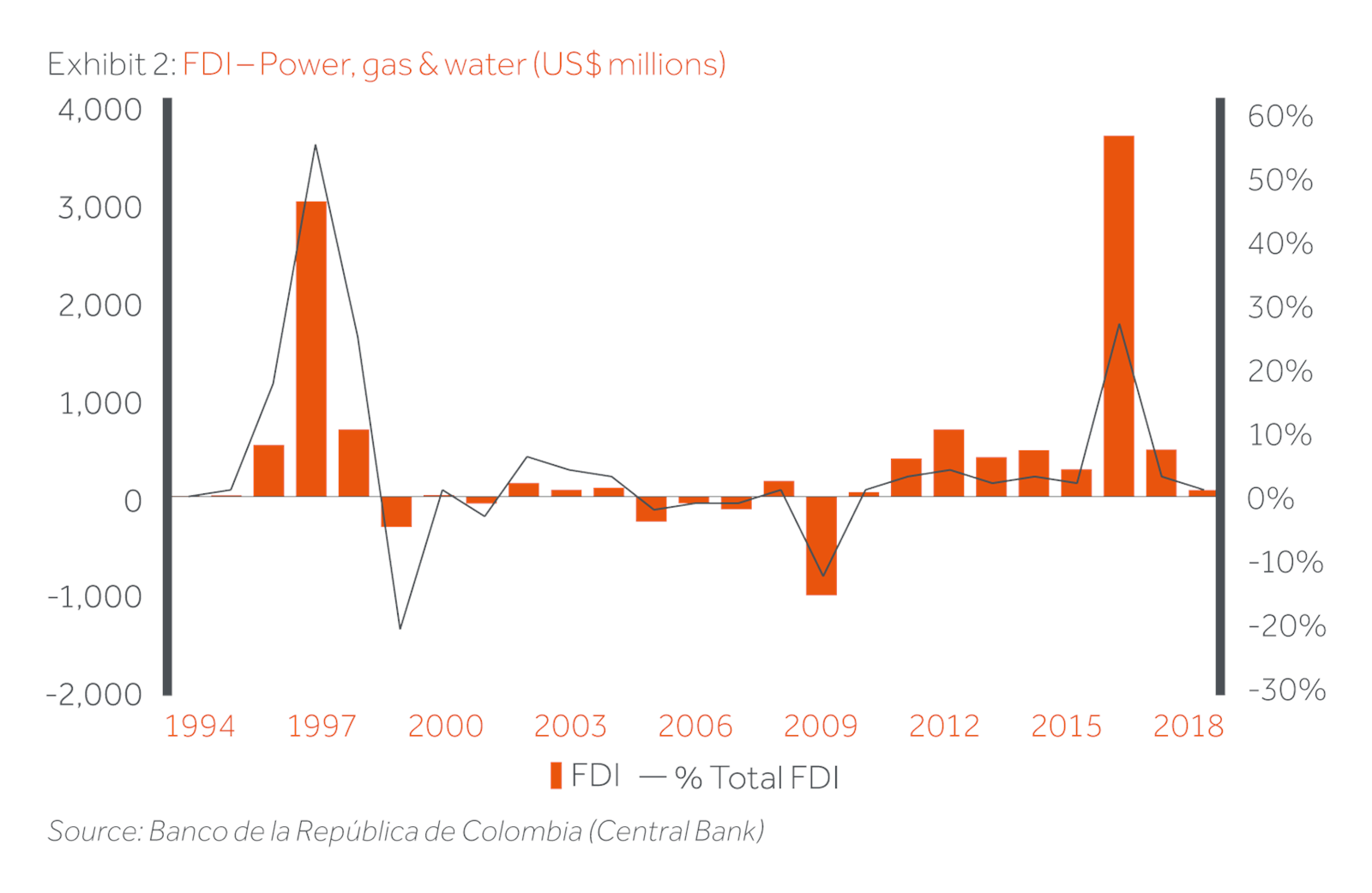
Alvaro Uribe was elected as President in 2002 with the promise of defeating the guerrillas. He almost succeeded: the FARC guerrilla movement was weakened significantly which contributed to the signing of a peace agreement with Mr. Uribe’s successor. Besides his strong military stance, Mr. Uribe had a pro-market agenda which touched the energy space. International industrial players and regional funds, invested in the sector through project finance type structures: thermal power plants thrived on the back of dollar-denominated reliability charges introduced in 2006 to guarantee energy supply through severe weather conditions. Dollarized reliability charges were assigned to 46% of the country’s installed capacity, helping to mitigate foreign exchange risk in power generation (today’s figure is 51%). By the end of Mr. Uribe’s two terms in office, Colombia was en route to an investment grade rating, opening the country to much larger pools of foreign direct investment. He stepped down in 2010, yielding the presidency to his political heir and defence minister, Juan Manuel Santos.
While Mr. Santos continued the economic agenda of his predecessor, he drastically changed his approach towards the armed conflict, negotiating a peace agreement with the FARC in 2016. This further positioned Colombia’s positive international momentum. With security risks mitigated, a twenty-year track record of private sector participation, and growing energy demand, Colombia’s attractiveness for energy infrastructure investments improved significantly. A third wave of privatisations took place in which more institutional players entered the country. Following the privatisation of Isagen (acquired by Brookfield), the government allocated sale proceeds to fund the US$40 bn game-changing 4G roadway concession program. However, several risks still loomed, encumbering the mass entry of foreign capital into the energy sector: peso-denominated prices (only reliability charges are dollar-denominated), short contract terms, unfavourable dispute resolution structures, and corruption.
It wasn’t until 2019 that Colombia jumped on the non-hydro renewables bandwagon, several years after peers like Mexico, Chile and Peru implemented large-scale programs. February 2019 witnessed the first attempt of increasing non-hydro renewable generation from 50 MW of installed capacity today to over 500 MW within 4 years. Even though bidders submitted proposals totalling 1.5 GW (to supply c. 2% of Colombia’s generation) the process failed due to tender design failures. Bidders sought longer term contracts, ideally dollar-denominated prices, and improved offtake structures. This feedback was incorporated by the government and should partly be reflected in the second tender that will occur in October 2019. One key term remains unchanged, though: foreign exchange risk. Prices will still be peso-denominated which will undoubtedly pose challenges for certain investors and could hinder the program’s success – as a point of reference, Chile, Peru and Mexico have all implemented dollar denominated auction programs, Brazil being the only local currency advocate.
The outlook for the sector looks bright. In power transmission, the highlight in the short term will be the privatisation of the government’s 51.4% stake in ISA, Colombia’s electric transmission backbone and South America’s largest transmission company. The company holds a 75% market share across the country and has international presence in Peru, Chile and Brazil. This could be one of Latin America’s largest M&A transactions in the energy space in 2020. During the next twelve months, recently upgraded tariff regulation will bring Colombia’s distribution sector to OECD standards and will encourage significant low-risk investments at an attractive rate of return. Mr. Duque’s government is also promoting the privatisations of several regional distribution companies aggregating over 1 million customers and Electricaribe, a distribution company with a 23% market share (2.5 million customers).
Looking ahead, power and infrastructure investments will be driven by liberalised energy market policies and sustained regulatory stability. Several growth avenues will emerge in the sector from 2020 onwards: i) smart metering and distributed generation, ii) wind and solar auctions and iii) transmission and distribution privatisations. Regulatory change is already underway for some of these opportunities, fostering new business models for small-scale self-generation and propelling distribution companies into a new billing era through cutting edge smart meters.
Improving the quality of the energy sectors efficiency and incentivising foreign investment have been key priorities for the government during the past 25 years. Four waves have shaped the power infrastructure initiatives in the country, cultivating the field for foreign players. Colombia has demonstrated its willingness to listen and act on the concerns of potential investors and has improved significantly since the days of nation-wide blackouts. Foreign investors have taken notice and responded accordingly. However, foreign exchange and other risks remain, hindering mainstream investment into the sector. Investors’ eyes will be set on the results of the second renewable energy tender in October 2019, the next test of the sectors attractiveness to foreign capital.



